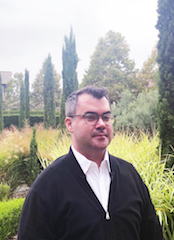Increase revenue by shifting your focus from spa to wellness

As many luxury hotel groups turn their focus from spa to wellness, Rosewood Hotels' Danny Silva explores how to maximise and measure its impact on revenue
Wellness tourism has been identified as one of the fastest growing travel segments. A research report conducted by SRI Inter-national for the Global Wellness Summit (GWS) recently found that it already represents a US$808 billion market.
Consciously and unconsciously, wellness is becoming more significant in our day-to- day lives, in the ways we work, eat, sleep and socialise. As the spa industry evolves, so does the positioning of what we can offer our hotel guests and associates alike. Many brands are evolving their spa divisions into wellness divisions with a focus on wellbeing.
Two years ago, Rosewood Hotels & Resorts’ spa division was revamped, under the leadership of Niamh O’Connell, as a wellness division designed to enhance the guest experience while increasing the percentage that the spas in the portfolio could add to the bottom line.
Part of that evolution consisted of creating a separate wellness offering called Asaya and a rebranding of the existing wellbeing offering called Sense, a Rosewood Spa.
At Asaya at Rosewood Phuket, guests can work with onsite practitioners to create customisable wellness retreats, ranging in length up to 14 days. These programmes promote mindful eating, healthy sleep, inner peace, energy and balance while incorporating meditation and yoga.
Interestingly, part of the success with this launch was ensuring that the hotel staff members were immersed in the concept. So, the entire property participated in the spa’s soft opening, experiencing and receiving treatments as though they were guests themselves.
Staff wellbeing
Wellness should be an emphasis not just for our guests, but also our associates. A more recent evolution at Rosewood is an enhanced focus on Associate Wellness.
According to a joint Harvard Medical and Business School Study, factoring in savings on healthcare costs and absenteeism costs, for every $1 spent on employee wellness, a company will save more than $5.
Asaya resident wellness practioner Steven Harvey explains that “traditional employee wellness programmes have focused on things like physical activity and healthy eating. Yet the booming trend of holistic employee wellness programmes addresses additional aspects of employees’ lives to improve 360-degree health”. Emotional, social, physical, and fiscal health all are related. For example, if financial challenges stress an employee, her health can suffer, even if the employee eats wholefoods and gets regular exercise.
Financial focus
But how does one measure the success of the programming from a business aspect? The goal with these retreats is to drive wellness guests to our resorts and spas, which increases occupancy rates, retail sales, and food and beverage sales.
Spa directors at Rosewood were charged with working with their teams to drive business metrics and report them on a KPI dashboard. This includes retail to sales percentages, therapist and room use, average treatment length, and so on. In addition to rebranding our spa menus and the partners we work with, we saw some spas enjoy an almost 100% increase in their retail sales as well as guests transitioning to booking longer 90- and 120-minute treatments rather than 60-minute versions, which drives several KPI metrics.
Our hotels and resorts are in diverse markets, including destination resorts and urban city spas. At both, we have seen fitness programmes driving revenue through membership programmes to attract local guests to become repeat customers. At Rosewood Sand Hill in Menlo Park, California, for example, the spa’s business is 80% day spa guests. The spa also has an exclusive membership programme that charges premium pricing.
Our other spas are doing membership programmes to attract local day spa guests in London, Paris and Beijing and some are so exclusive that they only have ve openings, based on the size of the spa’s wet facilities and number of lockers. But these members actively participate in the tness and spa offerings of their home spa and become community advocates, which in turn drives referrals.


